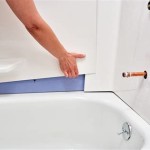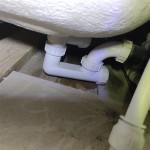How Do I Get My Dog In The Bathtub: A Game of Thrones-Worthy Endeavor
Bathing a dog, especially one reluctant to participate, can feel akin to commanding unruly armies in Westeros. Convincing a canine companion that a bath is beneficial, not a torturous ordeal, often requires strategy, patience, and a dash of cunning. This article provides detailed guidance on successfully navigating the canine bathing process, transforming a potential conflict into a manageable and perhaps even pleasant experience.
The aversion to bath time is common among dogs, stemming from various factors. Some dogs are simply sensitive to the sensation of water, particularly when it's sprayed or poured over them. Others may have had a negative experience during a previous bath, such as water getting in their eyes or ears, or the use of harsh shampoos. The slippery surface of the bathtub can also be a source of anxiety, making them feel unsteady and vulnerable. Understanding the underlying reasons for a dog's reluctance is the first step in addressing the problem effectively.
The challenges involved in bathing a reluctant dog can be significant. A struggling dog poses a risk of injury to both the animal and the person attempting to bathe it. Scratches, bites, and back strain are all potential consequences of a poorly managed bathing session. Furthermore, forcing a dog into the bath can exacerbate its anxiety and fear, making future bathing attempts even more difficult. Therefore, a gradual and positive approach is crucial for long-term success.
Building Positive Associations: From Fear to Favor
The foundation of successful dog bathing lies in creating positive associations with the bathroom and the bathing process. This involves a gradual desensitization approach, where the dog is slowly introduced to the elements of the bath in a non-threatening manner. The goal is to replace negative feelings with positive ones, making the experience more enjoyable for the dog.
Begin by simply allowing the dog to explore the bathroom at their own pace. Offer treats and praise as they enter the room, associating the space with positive reinforcement. This helps to reduce any initial anxiety related to the enclosed environment. The key is to make the bathroom a familiar and comfortable place before introducing any water or bathing equipment.
Next, introduce the bathtub itself. Encourage the dog to step into the tub without any water present. Use treats and verbal encouragement to reward them for their willingness to explore. If the dog is hesitant, start by simply having them place one paw inside, gradually increasing the amount of time they spend in the tub. A non-slip mat can provide added security and reduce anxiety caused by the slippery surface.
Once the dog is comfortable being in the bathtub, introduce the sound of running water. Start with a low trickle and gradually increase the volume. Observe the dog's reaction carefully. If they show signs of anxiety, such as panting, whining, or trembling, reduce the water flow and offer reassurance. The aim is to acclimate the dog to the sound of water without causing undue stress.
Introduce the bathing tools, such as the shampoo bottle, washcloth, and sprayer, in a similar manner. Let the dog sniff and investigate these items, associating them with positive reinforcement. Practice touching the dog with the washcloth or sprayer without turning on the water, rewarding them for their calm behavior. This helps to desensitize them to the physical sensations associated with bathing.
Strategic Bathing Techniques: A Measured Approach
Once the dog is relatively comfortable with the elements of the bath, the bathing process itself can be initiated. However, it's crucial to adopt a measured and strategic approach, avoiding any sudden or forceful actions that could trigger anxiety.
Before starting the bath, ensure that all necessary supplies are within easy reach. This includes shampoo, towels, washcloths, and any special grooming tools. Having everything prepared in advance minimizes the duration of the bath and reduces the potential for stress. A helper can be invaluable, providing reassurance and assistance during the process.
Use lukewarm water, avoiding extremes of hot or cold, as these can be uncomfortable for the dog. Start by gently wetting the dog's fur with the sprayer or a cup, avoiding the face and ears. Speak in a calm and reassuring voice, praising the dog for their cooperation.
Apply shampoo sparingly, focusing on areas that require the most cleaning. Massage the shampoo into the fur, working from head to tail. Avoid getting shampoo in the dog's eyes and ears, as this can be irritating. A tear-free shampoo is recommended to minimize the risk of irritation.
Rinse the shampoo thoroughly, ensuring that no residue remains. Shampoo residue can cause skin irritation and dryness. Continue to praise and reassure the dog throughout the rinsing process.
After rinsing, gently squeeze out excess water from the dog's fur. Use a soft towel to dry the dog, starting with the head and working down the body. Avoid rubbing the fur vigorously, as this can cause mats and tangles. A dog-specific towel is often more absorbent and dries the dog more efficiently.
If the dog tolerates it, a low-heat hair dryer can be used to speed up the drying process. However, it's crucial to monitor the dog's reaction carefully and avoid overheating. Start with a low setting and gradually increase the temperature as the dog becomes more comfortable. Keep the dryer moving to prevent burns.
Maintaining a Positive Routine: Consistency is Key
Establishing a consistent bathing routine is essential for maintaining a positive association with the process. Regular bathing, even if it's just a quick rinse, helps to prevent the buildup of dirt and odors, making the grooming process easier and less stressful for both the dog and the owner.
The frequency of bathing depends on the dog's breed, lifestyle, and coat type. Dogs with long or thick fur may require more frequent bathing than dogs with short or smooth coats. Dogs that spend a lot of time outdoors may also need more frequent bathing to remove dirt and debris.
Between baths, regular brushing helps to remove loose fur and prevent mats and tangles. Brushing also stimulates the skin and promotes healthy coat growth. A variety of brushes are available, each designed for specific coat types. Experiment to find the brush that works best for the dog's fur.
Positive reinforcement should be used consistently throughout the bathing process. Treats, praise, and petting are all effective ways to reward the dog for their cooperation. The goal is to make bathing a positive and enjoyable experience, strengthening the bond between the dog and the owner.
If a dog experiences significant anxiety or fear during bathing, consulting with a professional dog trainer or veterinarian is recommended. They can provide personalized guidance and may recommend the use of calming aids or medications to help reduce anxiety. In some cases, a professional groomer may be a better option for bathing a particularly difficult dog.
Patience and consistency are paramount when addressing a dog's aversion to bathing. It may take time and effort to change a dog's perception of the bathing process. However, with a gradual and positive approach, it is possible to transform a potentially stressful situation into a manageable and even enjoyable experience for both the dog and the owner.
How Often Should You Bathe Your Dog Howstuffworks

What Happened To Scrubs Taxidermied Dog Rowdy According Zach Braff Cinemablend

Dog Bathroom Art For And Rest Room Crown Paw

Custom Game Of Thrones Pet Portrait Costume Jon Snow Gift Dad For Him Husband Boyfriend

The Most Popular Game Of Thrones Inspired Dog Names Sit Means College Station

Pica Ice Throne Dog Bed

Game Of Thrones Star The Mountain Has A Very Tiny Puppy Page Six

Custom Game Of Thrones Pet Portrait Costume Jon Snow Gift Dad For Him Husband Boyfriend

We Suddenly Lost Our Dog To Hemangiosarcoma La Jolla Mom

I Ignored Game Of Thrones For 8 Years Then Inhaled It In 5 Weeks The New York Times
Related Posts








